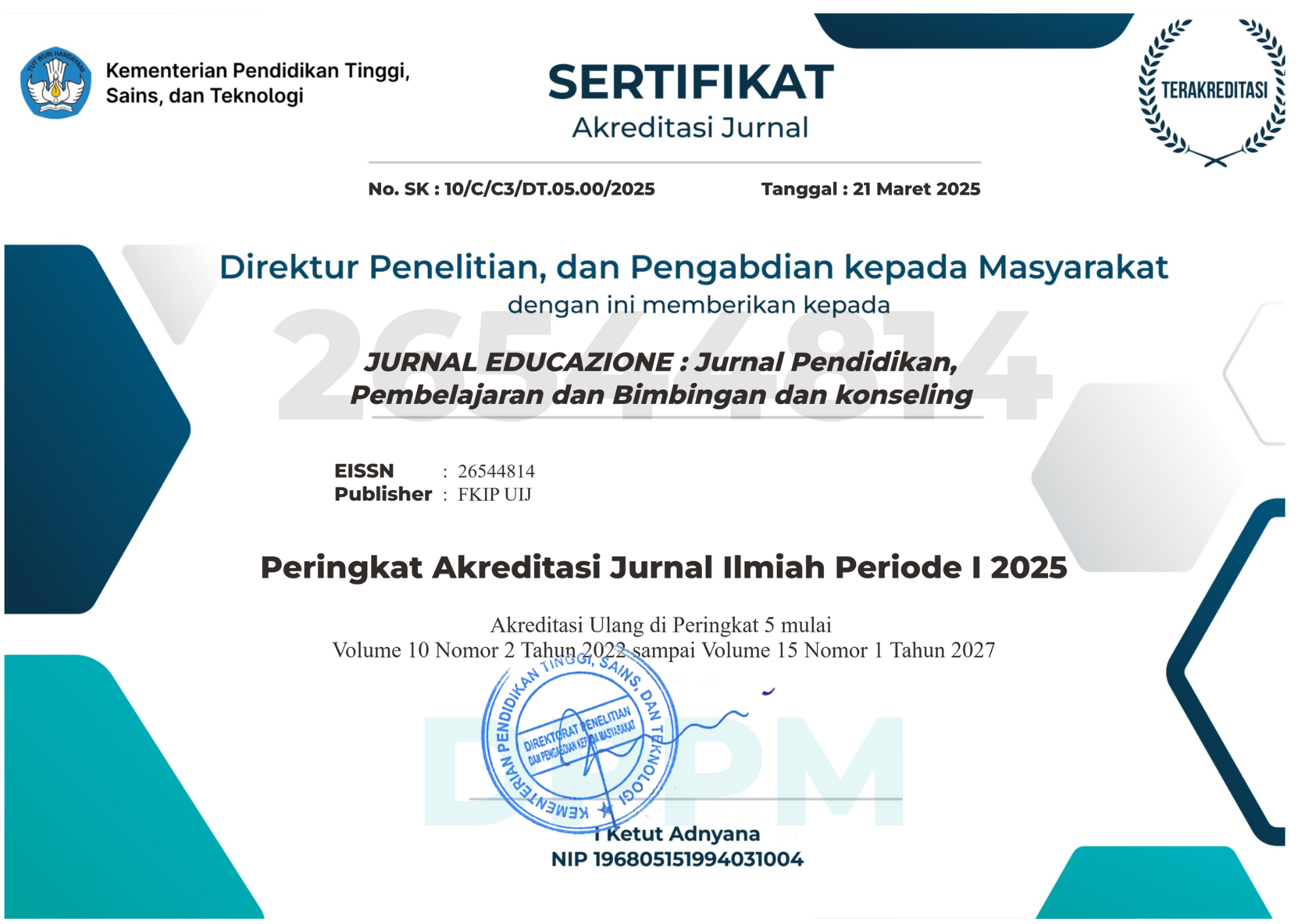ISSN
Author Guidelines
General Guidelines and Layout
Guidelines
- The submitted articles must be original and have not been published or submitted elsewhere.
- Articles should be conceptual papers or field research focusing on English Language Education, Mathematics Education, Biology Education, and Guidance and Counseling.
- Articles may be written in either Indonesian or English.
- Manuscripts should be between 10 to 15 pages long, typed in Calibri 12, single-spaced, and a single column on A4-sized paper.
- Manuscripts must be written in standardize language, proper punctuation, and spelling in accordance with the Enhanced Indonesian Spelling System (EYD) or Standard English.
Layout
- TITLE, The title must be clear, unambiguous, not more than 15 words, and reflect the content or indicators accurately.
- AUTHOR(S), Email, and Affiliation. The author's full name (without titles) should be written below the title, along with an email address. Author affiliation should appear as a footnote on the first page, using Calibri 10, justified alignment, and single spacing. The affiliation should be written in full (no abbreviations), including the name of the university and the country.
- ABSTRACT should briefly present the rationale of the study, research methods, findings/discussion, and conclusions in a concise manner. If the article is written in Indonesian, the abstract must be provided in both Indonesian and English. If the article is written in English, the abstract is required in English only. The abstract should be written in normal font (not italicized) and consist of 75–150 words.
- KEYWORDS must reflect the core concepts of the article, not more than 5 keywords, be separated by semicolons (;) and listed alphabetically in italic format.
- INTRODUCTION must sequentially contain: philosophy related to the state of the art of the problem, theoretical mainly used, and practical background related to review of previous studies, novelty, problems or hypotheses, and the objectives of the study.
- METHODS should clearly describe the research design, subjects, instruments and procedures, and data analysis techniques.
- RESULTS AND DISCUSSION should present all research findings, supported by tables, graphs, or figures with descriptive explanations. A critical and in-depth discussion should be provided based on theoretical and empirical reviews, highlighting the novelty of the findings compared to previous studies.
- FIGURES AND/OR TABLES must be numbered sequentially according to its appearance in the text (e.g., Figure 1, Table 1).
- CONCLUSION should clearly answer the research hypotheses/questions which based on in-depth analysis, the findings related to the research objectives, and presented in a descriptive (non-numeric) form.
- REFERENCES must appear in the reference list, and vice versa which use reference management software (such as Mendeley, Zotero, RefWorks, or EndNote) for citation and bibliography formatting.














 a
a 



